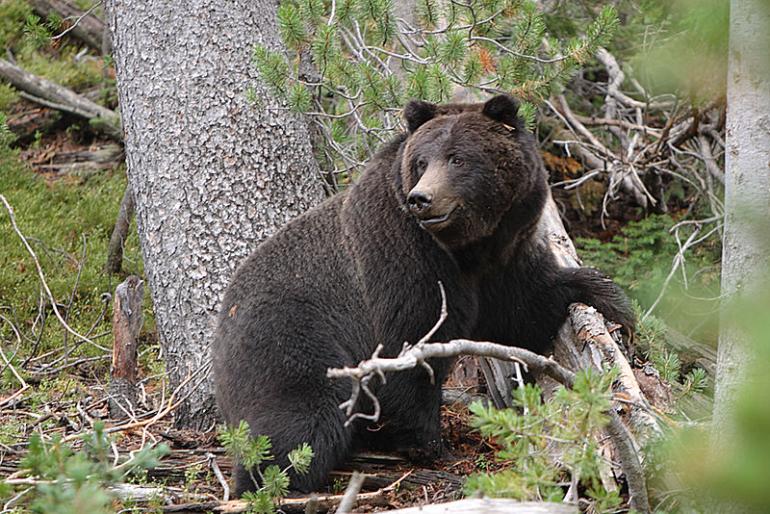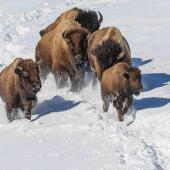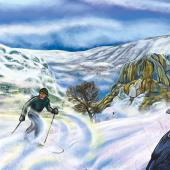Black Out
Yellowstone grizzlies are not your garden-variety grizzly. Because an unusual number of them go through a black-color phase, and because they are more ponderous and gargantuan than the government often gives them credit for, there’s a precedent for continued protection.
Canada has the opposite problem, if you will: there is a movement to ban hunting the “Spirit Bear,” which is essentially a white-phase grizzly bear. Not only does the bear enjoy the irony, it gets all sorts of other goodies and kudos, like a subspecies designation of Ursus americanus kermodi and a brand-spanking-new abode the size of New Jersey. The habitat is called the Great Bear Rainforest.
In Yellowstone, what’s been called the best idea America ever had, the reception for the grizzly has been more chilly lately. There is a double standard, and it is not so black-and-white. The iconic grizzly bear, the most charismatic of our megafauna, is being delisted from threatened status. Experience on the ground suggests about a tenth of Yellowstone’s bears are black. Similarly, ten percent of Kermodeis are white. This is in the ballpark of the proposed number of hunting permits that is in the cards. These black grizzly bears are making their last stand, with the Last Best Place as a last stronghold, and it could be open season very soon, with the benefit of a refuge only half the size of that accorded the more pint-sized Kermodei.
Even at this population peak, black grizzlies are more scarce, numerically speaking, than estimates of white “Ghost” bears, which come in at the relatively healthy count of 300, living in the impenetrable forest. So it appears that we’re essentially going to celebrate the grizzly bear’s recovery by decimating them (culling one in ten), and conceivably eliminating all black grizzlies in one hunt.
But, to be fair, few are aware of these special black grizzly bears that have been largely left out of the calculations. Black grizzlies have been irrefutably documented across the western reaches of Montana. We should encourage connectivity of habitat corridors so Montana is not bereft of black grizzlies, like one of these states that just has grizzlies on the flag instead of in the flesh.
Instead of passing the conservation torch to Canada, with the ghost bear in the running, with all the makings of a great Olympic mascot for marketing, let’s not defer, but see to it that the black grizzly, a subset of the state mammal, does not get the short end of the stick. Maintain untrammeled habitat for all grizzlies, and the same special protection from hunting afforded its Canadian cousins, not just in Yellowstone but within all the Primary Conservation Area, which just so happens to be roughly the size of New Jersey. These equal areas would level the playing field and provide a refuge equal to Kermodeis, so black grizzlies don’t need to live as claustrophobic hermits, but have plenty of room to roam and enjoy core protection.
Although we already have the Teddy Bear, which symbolized Roosevelt’s sparing of a bear cub’s life while hunting in 1903, maybe unremitting support for the black bear could be symbolized by a stuffed toy named after Roosevelt’s son, Kermit. One has to admit that this plan has a certain kismet.
Ryan Molde wrote “Miracle at Mavericks,” about a great white, in Surfer magazine.













